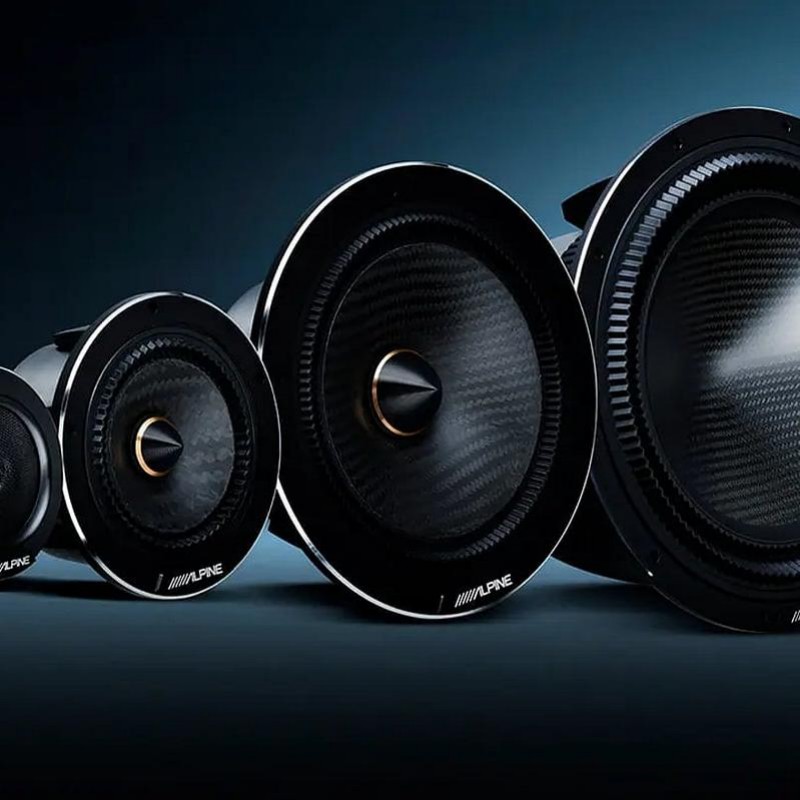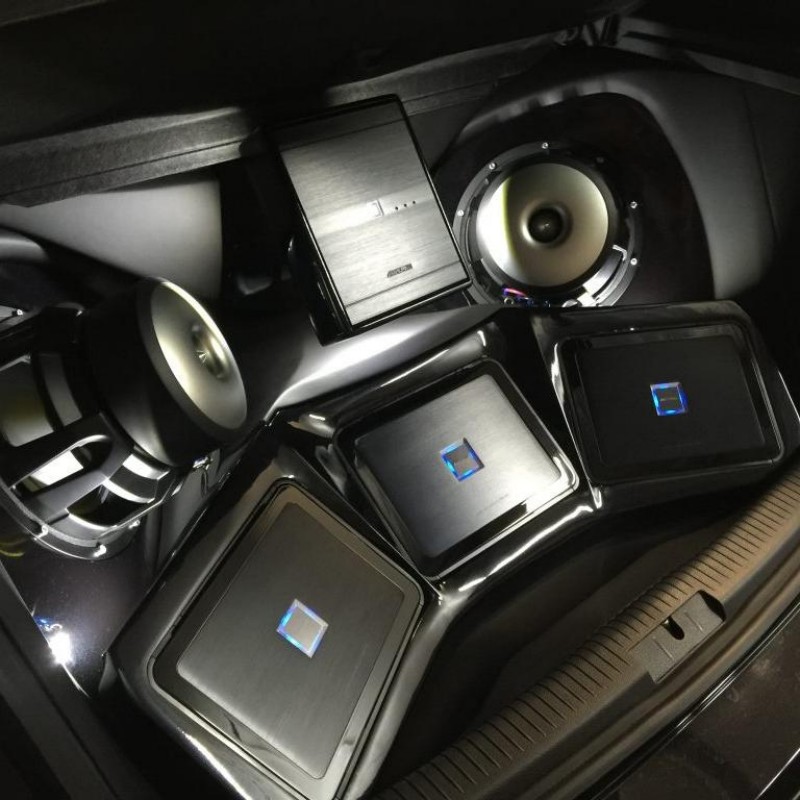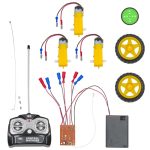When it comes to enjoying music on the road, the quality of your car audio system can make a significant difference in the overall driving experience. For many enthusiasts and casual listeners alike, tuning and optimizing car audio systems is a passion that transforms ordinary drives into immersive audio experiences. The process can range from simple adjustments to intricate modifications, and it requires understanding various components, sound dynamics, and settings. Whether you’re aiming for crisp highs, deep bass, or balanced tones, the art of tuning your car audio system is an essential skill that brings your favorite tracks to life.
In this comprehensive guide, we will explore the various aspects of tuning and optimizing car audio systems, including essential components, the principles of sound, equalization techniques, wiring and installation tips, and steps to effectively troubleshoot common audio issues. Additionally, we will look at some popular brands and products to consider, along with expert advice from audiophiles and professionals in the field. By the end of this article, you’ll have the knowledge and skills necessary to elevate your car audio experience from mediocre to exceptional.
Understanding the Basics of Car Audio Systems
Before diving into the details of tuning and optimizing car audio systems, it’s essential to understand the fundamental components that contribute to the overall sound quality. Familiarizing yourself with these components will help you grasp how to improve your audio system effectively.
Key Components of Car Audio Systems
Car audio systems typically consist of several primary components, each playing a distinct role in delivering sound quality:
- Head Unit: This is the control center of your car’s audio system, encompassing the radio, CD player, Bluetooth capabilities, and more. The head unit allows you to adjust settings like volume, balance, and treble.
- Speakers: Speakers are responsible for converting electrical signals into audible sound. Most car audio setups include various types of speakers, such as coaxial speakers (full-range) and component speakers (separate woofer and tweeter).
- Amplifiers: An amplifier boosts the audio signals sent to the speakers, providing greater volume and clarity. Higher-quality amplifiers can significantly enhance the listening experience, especially in larger systems with bass-heavy setups.
- Subwoofers: Subwoofers are specialized speakers designed to produce low-frequency sounds, particularly bass. Integrating a subwoofer into your car audio system improves low-end response and overall depth.
- Wiring: Quality wiring and connections ensure that audio signals flow efficiently between components. Proper wiring helps minimize interference and loss in audio quality.
Sound Dynamics
Understanding sound dynamics is crucial for tuning your audio system effectively. Here are key principles:
- Frequency Response: This refers to the range of frequencies that a speaker or audio system can reproduce. Ideally, a well-tuned system will cover the full spectrum of sound, from deep bass (around 20Hz) to high treble frequencies (up to 20kHz).
- Sound Stage: The sound stage refers to the perceived width, depth, and height of the audio experience. A properly tuned system will create an immersive sound stage, making it feel as if instruments and voices are positioned around you.
- Balance and Equalization: Fine-tuning the balance and equalization settings helps ensure that all audio frequencies are heard clearly. Understanding how different frequencies interact will enhance your tuning efforts significantly.
By grasping these basics, you’ll be better equipped to begin tuning and optimizing car audio systems effectively.
The Importance of Tuning and Optimizing Car Audio Systems
The effectiveness of tuning and optimizing car audio systems lies in the substantial difference it can make to your listening experience. Here are several reasons why these practices are vital:
Personal Customization
Every listener has unique preferences in sound quality. Tuning allows for personalization—adjusting levels and settings to match your tastes. Whether you love deep bass or crystal-clear highs, optimizing your audio system can create a tailored experience.
Enhancing Sound Quality
Improperly set up audio systems often result in muddy sound, distortions, or weak bass response. By tuning your audio system, you can eliminate these shortcomings and create a cleaner, richer sound. The improvement in quality will also make your favorite music sound more vibrant and engaging.
Improving Clarity
Clarity is crucial for enjoying vocals and instruments within a mix. Tuning and optimizing your system can help clarify sound separation, ensuring each element in a song can be appreciated distinctly.
Extending Equipment Lifespan
A properly tuned audio system experiences less strain on components, which can contribute to extending the life of speakers, amplifiers, and other hardware. Avoiding distortions and overloading can prevent unnecessary wear and tear.
Better Volume Control
Tuning your audio system enhances control over volume levels—essential for maintaining a comfortable listening experience without sacrificing sound quality. You can adjust settings to achieve the right level for different environments, whether on the road or parked.
These considerations highlight the importance of tuning and optimizing car audio systems for anyone looking to enhance their audio experience while driving.
Essential Tools and Equipment for Tuning Your Car Audio System
To achieve effective tuning and optimization of your car audio system, having the right tools and equipment can make a significant difference. Here are key tools to consider:
Sound Level Meter
A sound level meter measures the volume of sound produced by your audio system. This tool is invaluable for ensuring balanced audio levels across different frequencies while avoiding distortion or clipping.
EQ (Equalizer)
A graphic or parametric equalizer helps adjust frequency levels in your audio system. It allows you to enhance specific frequencies or cut others, enabling better control over the sound signature of your system.
Signal Generator
A signal generator can produce audio signals (such as sine waves) at various frequencies to help identify resonances, distortions, and other issues within your system during the tuning process.
A Multi-Meter
A multimeter is useful for checking electrical connections, ensuring that the wiring of your audio components is solid and functioning correctly. This tool aids in diagnosing potential issues with the system.
Smartphone Apps
There are various smartphone apps available that can assist in tuning your audio system. These apps can measure sound levels, help set up equalizers, and even evaluate frequency response, making it easier to optimize your system.
Listening Test Tracks
Having a selection of music that you know well is crucial for evaluating sound quality. Use various tracks across different genres to identify specific elements and areas for tuning.
Equipping yourself with these tools will enable you to effectively tune and optimize your car audio system for the best listening experience.
Steps for Tuning and Optimizing Your Car Audio System
Now that you’ve gathered the necessary tools, follow these steps to effectively tune and optimize your car audio system:
Initial Setup
Start with a proper system setup, ensuring that all components are securely installed and correctly wired. Check for any potential issues with connections that could affect performance.
Assessing the Sound
Once your setup is complete, listen to some familiar tracks at various volume levels. Pay attention to how the sound interacts within your car, noting areas that need adjustment, such as overpowering bass or muffled treble.
Using a Sound Level Meter
Use the sound level meter to test the sound output at various frequencies. With each frequency range, identify any imbalances. Adjust the equalizer settings correspondingly to balance frequencies accordingly.
Adjusting Equalization
Now that you have a clearer idea of how your system sounds, utilize the equalizer to make adjustments. Cut frequencies that are overwhelming and boost those that are lacking. The goal is to achieve a well-rounded sound without frequencies competing against one another.
Fine-Tuning the Setup
After making equalization adjustments, carry out further listening tests using various genres. Investigate how the changes affect the overall clarity, depth, and spatial placement of the sound.
Using Listening Test Tracks
Playing specific tracks that highlight areas of interest (vocals, bass lines, high notes) helps further fine-tune your settings. Evaluate how the motorcycle interacts with your music preferences and tweak the system accordingly.
Making Recording Adjustments
If possible, make recordings during your tuning sessions. Having an audio record of your adjustments can help track which configurations work best, enabling you to fine-tune your preferences better.
Final Adjustments and Re-Evaluation
After thoroughly testing and fine-tuning your audio system, step back to objectively listen once more to your favorite tracks. Assess whether further corrections are needed. Make final adjustments if necessary to finalize the tuning process.
By following these detailed steps, motorcyclists can successfully tune and optimize car audio systems for an enhanced listening experience.
Common Problems with Car Audio Systems and Their Solutions
Even after tuning and optimizing, car audio systems can experience issues that may affect performance. Here are some common problems and how to address them:
Distorted Sound
If you notice distortion, consider the following solutions:
- Check Volume Levels: High volume settings can lead to speaker distortion. Reduce the volume to see if that resolves the issue.
- Inspect Wiring: Improper wiring or damaged connections may lead to poor sound quality. Inspect all connections and wiring integrity, ensuring they are properly installed.
Weak Bass
Weak bass can diminish the overall sound of your audio system. Here are ways to remedy this:
- Adjust Equalization Settings: Boost the low-frequency ranges through the equalizer to enhance bass response.
- Upgrade Components: If weak bass persists, consider adding a dedicated subwoofer that can deliver the deep bass you crave.
No Sound or Intermittent Sound
If your system produces no sound or sounds intermittently, troubleshoot by:
- Checking Connections: Ensure all wiring and connections are secure. Loose connections can lead to erratic sounds or total audio loss.
- Testing Components: Try isolating components to determine if a specific component is faulty. Connecting a different head unit or speakers may help identify the problem.
Poor Sound Quality
Diminished sound quality can result from several factors. Here’s what to check:
- Inspect Sound Levels: Review your equalizer settings and sound levels. Ensure they are balanced and match your listening preferences.
- Quality of Media: Ensure you are using high-quality media files or streaming services to deliver better overall sound quality.
These common problems can often be addressed through careful troubleshooting and adjustments, ensuring that your audio system functions well for an enjoyable listening experience.
Popular Brands for Car Audio Systems
When shopping for components to tune and optimize car audio systems, considering well-known brands can help ensure quality and performance. Here are some popular brands worth exploring:
Pioneer
Pioneer is known for its wide range of head units, amplifiers, and speakers, offering innovative technology and superior sound quality. They cover everything from entry-level models to high-end options.
JL Audio
JL Audio specializes in producing premium speakers and subwoofers known for their fantastic sound reproduction and durability. They are a favorite among audiophiles who want to achieve exceptional sound quality.
Infinity
Infinity is recognized for its high-performance speakers and amplifiers. Their products often feature advanced technology for clarity and deep bass response, making them ideal for car audio systems.
Kenwood
Kenwood provides a diverse selection of head units and speakers, combining performance with affordability. Their lineup contains numerous user-friendly features, including Bluetooth connectivity and smartphone integration.
Alpine
Alpine is a well-respected brand known for high quality sound systems that emphasize durability and performance. They offer an impressive range of products, from speakers to amplifiers, tailored for both casual listeners and serious musicians.
Selecting components from reputable brands like these ensures reliable performance and enhances overall satisfaction with your car audio system.
Conclusion
Tuning and optimizing car audio systems is a rewarding endeavor that can dramatically transform your listening experience while driving. By understanding the components that create exceptional sound, the importance of proper tuning practices, and regular maintenance, riders can enhance their audio systems and elevate their enjoyment of music.
The journey towards perfect sound includes considering factors such as legal compliance, essential tools, and addressing common problems that may arise during the tuning process. Investing time in researching brands and models contributes significantly to achieving the desired audio quality and performance.
As you embark on your audio journey, remember that each adjustment and key tuning decision is a step towards creating a music-infused driving experience. Whether it’s cruising through the city or embarking on long road trips, a customized audio system brings joy and excitement to every ride.

